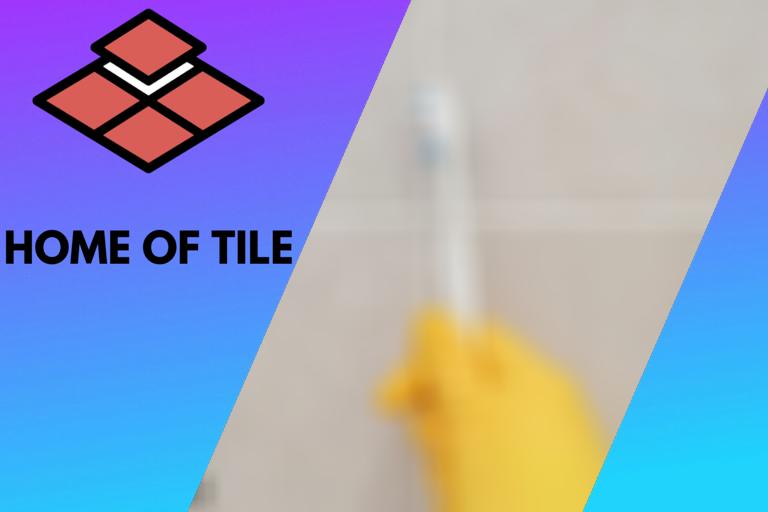What Happens if You Grout Tile Too Soon. What pros say
When you lay your tiles, whether it is on the floor or walls, you need to give the thinset mortar time to cure. Unfortunately, some people become too impatient or assume there is no such thing as grouting tile too soon. However, you should only grout tile after 24 – 72 hours.
If you grout tile too soon, the tiles will detach from the mortar and also move out of position, resulting in an unattractive and uneven tile setup. The floor will also not be flat since some tiles separate, causing the thinset to crumble. The tiles may also produce a hollow or echoing sound.

In this article, I’ll discuss the best time to grout tile, how to apply it, and what happens when you grout too soon.
Contents
Why You Shouldn’t Grout Immediately After Tiling
You shouldn’t plan on tiling and grouting at the same time or on the same day because you are likely to ruin the tiles. Before you start grouting, you should know if that is the best time to do it.
Expect the following if you grout immediately after tiling:
- Tiles may move: The tiles may move out of position because the mortar solution is still wet.
- Seal wet mortar: The grout will seal wet mortar, denying the tiles a chance to set well.
- Mortar stays wet: The mortar will remain wet for too long, increasing the risk of mold developing and damaging the wall.
- Tiles fall off: Wall tiles may fall off and break. On the other hand, floor tiles will pop out, resulting in an uneven floor.
- Mold buildup: Mold buildup due to the wet mortar will result in grout discoloration.
Grouting immediately after tiling will not only ruin the overall appearance of your space, but it may also cost you much more in repairs. You can avoid this extra expense if you wait for the mortar to set before grouting.
How Long Should Thinset Mortar Set Before Grouting?
Thinset mortar needs to cure before you can start grouting tile. The time it will take to dry depends on how much water you added to the thinset, the layer of thinset used, and the temperature and humidity levels.
Thinset mortar should set for 24 – 72 hours before grouting. If the thinset is thick or the temperatures are low, you should wait a little longer before applying grout. It is best to wait for at least 24 hours, but if you can wait longer, the better. It is more harmful to grout too soon.
The decision on when to grout is subjective. You should be independent based on the state of the thinset and your environment. However, you should avoid using very light and thin thinset in a bid to grout before 24 hours elapsed. Even though the thinset will dry quickly, the tile will not properly adhere to the floor or wall.
Why You Shouldn’t Walk on Newly Laid Floor Tiles
One of the reasons you shouldn’t grout before 24 hours elapse is that you shouldn’t walk on the tiles before they are set. Depending on the type, tiles are tough and can withstand considerable weight. However, you’ll take multiple risks when you step on the tiles too soon.
- When you put weight on the tiles, they may shift from their original position. If part of the thinset had started to cure, the movement of the tile might interfere with the process.
- The grout lines will be uneven. Some tiles will be connected with large grout lines, while others will have thinner lines
If possible, avoid walking on the tiles for 24 72 hours. If the room is a high-traffic area, lay the tiles in portions. Leave some tile-free pathways until the thinset in the laid tiles has cured enough.
This video shows how to correctly lay tiles without interfering with the mortar thinset curing process.
How To Speed Up Thinset Mortar Curing Time
When prepared correctly, the thinset mortar usually dries 24 – 72hours after laying the tiles. The water-retaining additive in the thinset needs air to harden. Unfortunately, sometimes the thinset mortar takes longer than 72 hours to dry because you used too much water when mixing the mortar or the air is too humid.
Here’s how to speed up thinset mortar curing time:
- Dry place: Store the mortar in a cool and dry place.
- Cool water: Use cool water to mix the mortar.
- Use a DeHumidifier: Dry the air with a dehumidifier.
- Thin layer: Avoid spreading a very thick layer of thinset mortar. However, don’t make it so thin that the tile doesn’t adhere to the floor.
- Notched trowel: Use a notched trowel. It will flatten and remove excess mortar, allowing the thinset to dry evenly.
- Quick-set-mortar: Spread quick-set mortar if you wish to set up the tiles within the shortest time possible. Depending on the brand, some quick-set mortars dry in less than 6 hours.
Confirm if the Mortar Underneath the Tiles Is Dry Before Grouting
Time is one of the indicators of whether you should grout tiles or not. However, you can take several steps to confirm if the mortar is dry before you start grouting.
Knock on the tiles to check if they produce a solid sound, which can indicate that the mortar is already dry and the tiles may be ready for grout. Carefully knock on all corners and the center of the tiles to see if they produce the same sound.
While this may seem troublesome, it can help ensure you’re not grouting your tiles too soon. Alternatively, you can wait 24 hours more just to be on the safe side. Chances are some tiles in the middle or the mortar underneath the center of the tiles have not yet dried completely.
Quickset mortar tends to dry much faster, usually 4-5 hours. Follow the mixing directions and perform the confirmatory test before you start grouting.
Conclusion
Grouting is an essential step in tiling. It connects the tiles and seals the gap between the tiles. It also contributes to the overall appearance of the floor and wall tiles. However, the time you grout matters because it will determine the tiles’ durability.
If the timing is wrong, you risk ruining the tile placement or even causing the tiles to start popping and cracking. You will also spend more on tiling if you make the mistake of tiling too soon.








